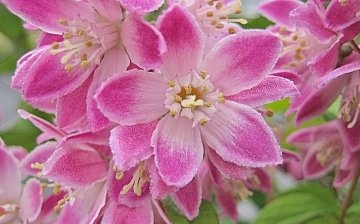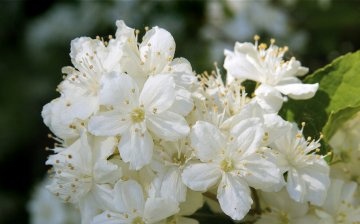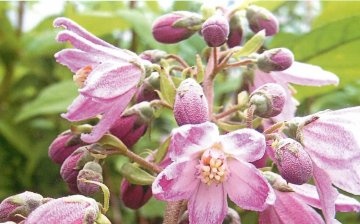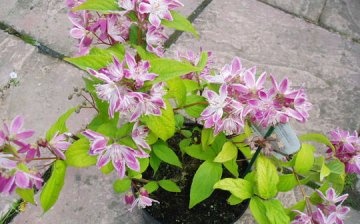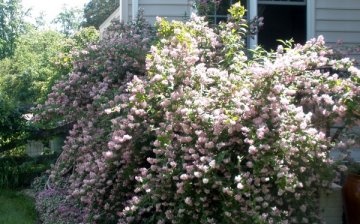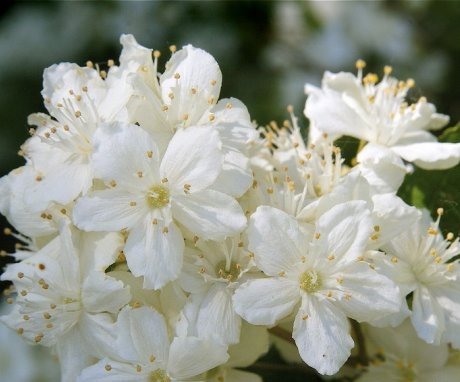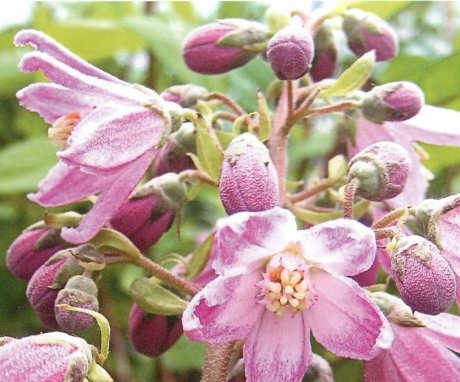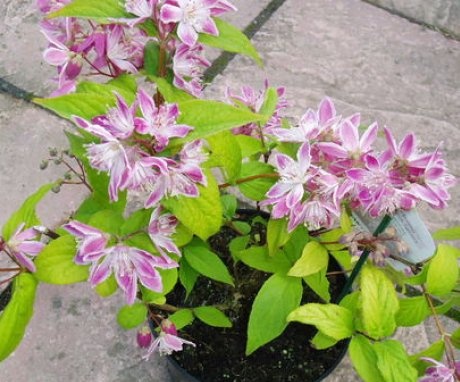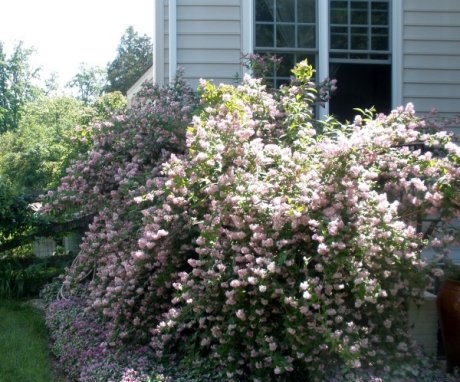Hybrid action: features, cultivation and use for decorative purposes
Deytsia is a beautiful shrub that is well known to many Russian gardeners. This plant belongs to the Hortensia family, the genus deytion includes more than 60 species of shrubs. In its natural environment, it grows in East and Central Asia, it is widespread in China, where up to 50 varieties can be found. Hybrid action is an artificially bred species that is obtained by crossing several different varieties. Because they adopt the best traits of the parent shrub, they are more resistant to weather changes and hardiness.
Content:
- Hybrid types of action
- Basic requirements for growing hybrid action
- Propagation of hybrid action
- Decorative use of action
Hybrid types of action
There are several common hybrid species. The most common variety is obtained by crossing the Amur action and the graceful action. This is a large shrub with erect shoots, the length of which can reach 2 meters. It attracts gardeners because of the abundant flowering that occurs in July. At the same time, large paniculate inflorescences with white flowers.
Several more hybrid types of action have become widespread:
- Strawberry Fields is a common shrub up to 150 cm high, attracting attention with beautiful white and pink flowers. It has oblong-lanceolate leaves, their length can reach 6 cm, the branches of the bush have an arched shape. Active flowering begins in June-July, large buds are white-pink in color with a red heart of the flower.
- Deyzia Lemoine is a hybrid species obtained by crossing the graceful and small-colored deytsia. The variety is one of the early, flowering begins at the very beginning of summer. The flowers are white, collected in lush large pyramidal inflorescences. From its predecessor cuts, Lemoine's deytsia inherited excellent winter hardiness.
- Deytsiya magnificent - one of the most beautiful varieties, which has gained wide popularity. The ancestors are Decius rough and Vilmorena. The flowers are white, large, the plant is moderately hardy and needs good care. The length of the inflorescences reaches 10 cm, double flowers attract attention from afar.
It is no coincidence that hybrid types of action have gained wide popularity.
When crossing, breeders managed to breed varieties with abundant flowering, while they tolerate the vagaries of nature well. For many varieties, general growing rules are characteristic.
Basic requirements for growing hybrid action
Action is not a very demanding plant, so it is not difficult to grow it.
However, in order to achieve abundant flowering on time, you need to be aware of the basic requirements that it is desirable to comply with. Almost all hybrid varieties of action are photophilous, they choose a place in the open sun.
You can choose a place in partial shade, but in this case the flowers will be small, and the flowering itself will end much faster.
It is recommended to plant winter-hardy varieties on the site: some types of action grow well only in the southern regions, and in the middle lane they will have to be covered for the winter.
For all varieties, it is important to comply with several requirements:
- When planting, the distance between the bushes should not be less than 2 meters, otherwise the plants will be cramped. Action is often used for decorative borders and creating hedgesas the bushes can grow quickly, forming a dense wall.
- The plant does not like stagnant moisture in the soil, but it has a negative attitude towards drought. The best option is a well-drained, moist soil rich in humus. If the weather is hot, dry, the plant needs mandatory watering, otherwise the leaves may begin to dry out.
- In the spring, after the snow melts, the bush must be carefully examined, old diseased branches must be cut off from it. After that, the soil is dug up, compost, potash fertilizers, and slaked lime are added under the bush. During the growing season, the soil is loosened several more times, while weeds must be removed.
- After flowering, re-pruning is carried out, which contributes to a greater density of the bush and abundant flowering for the next year. It is important not to be late with pruning: if you bring it in at the very end of summer, the plant will not have time to give new shoots before the onset of cold weather.
- As a result, next year, the action may be left without buds at all, but it is also impossible not to cut the shrub: there will be much less inflorescences on the old branches. Normally, the bush should be shortened by about a third of its entire length.
Deytsia prefers neutral acidic soil for growth. Lime is added to the acidic soil before planting to neutralize.
Propagation of hybrid action
Deutcia can be propagated by seed or cuttings, but seed propagation is usually only used for breeding purposes. The easiest way for an amateur gardener is cut propagation, which allows you to quickly get young shoots.
Features of cuttings:
- Cuttings for this are cut in late June - early July, since it is at this time that the plant has the strongest green shoots with lignified trunks.
- The length of the cutting should be about 10-15 cm, they should have at least 2 internodes.
- In cuttings, large leaf plates are cut in half so that there is no strong evaporation of moisture.
- A root is applied to the lower cut to accelerate root formation, after which the cuttings are placed in pots or boxes with nutrient soil.
- For them, you need to build a mini-greenhouse: the easiest option is plastic bottles that close the cuttings.
- The soil for the cuttings is mixed with coarse sand, in addition, there should be a layer of sand at least 2 cm thick on top.This is necessary so that moisture does not stagnate in the soil, otherwise the young roots may rot.
- After the roots appear, the cuttings are gradually accustomed to open air, after which they are transplanted into the ground.
- They must be covered for the winter.
- In the spring, they will quickly give the first young shoots.
In some cases, lignified cuttings are used for reproduction, which are cut not in summer, but in late autumn.
There are other methods of reproduction of action. One of them is the division of a large overgrown bush. The rhizome is dug up, after which it is divided with a shovel into several parts so that each of them has a part of the root system. A rarer type of breeding - reproduction by layering: in this case, the young plant remains associated with the mother for a long time, so it has a much better chance of surviving.
Decorative use of action
Deytsia is a very beautiful shrub that can fulfill several roles on the site.
Hybrid species are known for very beautiful flowering, so they can become the best garden decoration.
Several cultivation options are possible:
- Separately growing bush.Deytsiya hybrid can grow luxuriantly near the porch, it is easy for her to find a place on the site where she will receive enough sun. A separate bush attracts attention, actions with pink rather than white buds look especially beautiful.
- Hedge or curb. In this case, the action can become a good barrier, blocking part of the site from outside views. Regular pruning will keep the shoots thick and the distance between plants can be reduced to 1.5 meters.
- The shrub can also be used to decorate alleys and paths. Lush bushes along the usual walking routes will be a wonderful decoration, they look great in any territory.
- Hybrid action is a great option for any garden.
This lush large plant has gained considerable popularity in our country, especially in the southern regions. Hybrid species inherited the best features from the original varieties, so they will be quite hardy and frost-resistant, but in any case, care must be taken to create the right conditions for growth and plant development... Your care will be rewarded with great blooms every summer.
More information can be found in the video.



